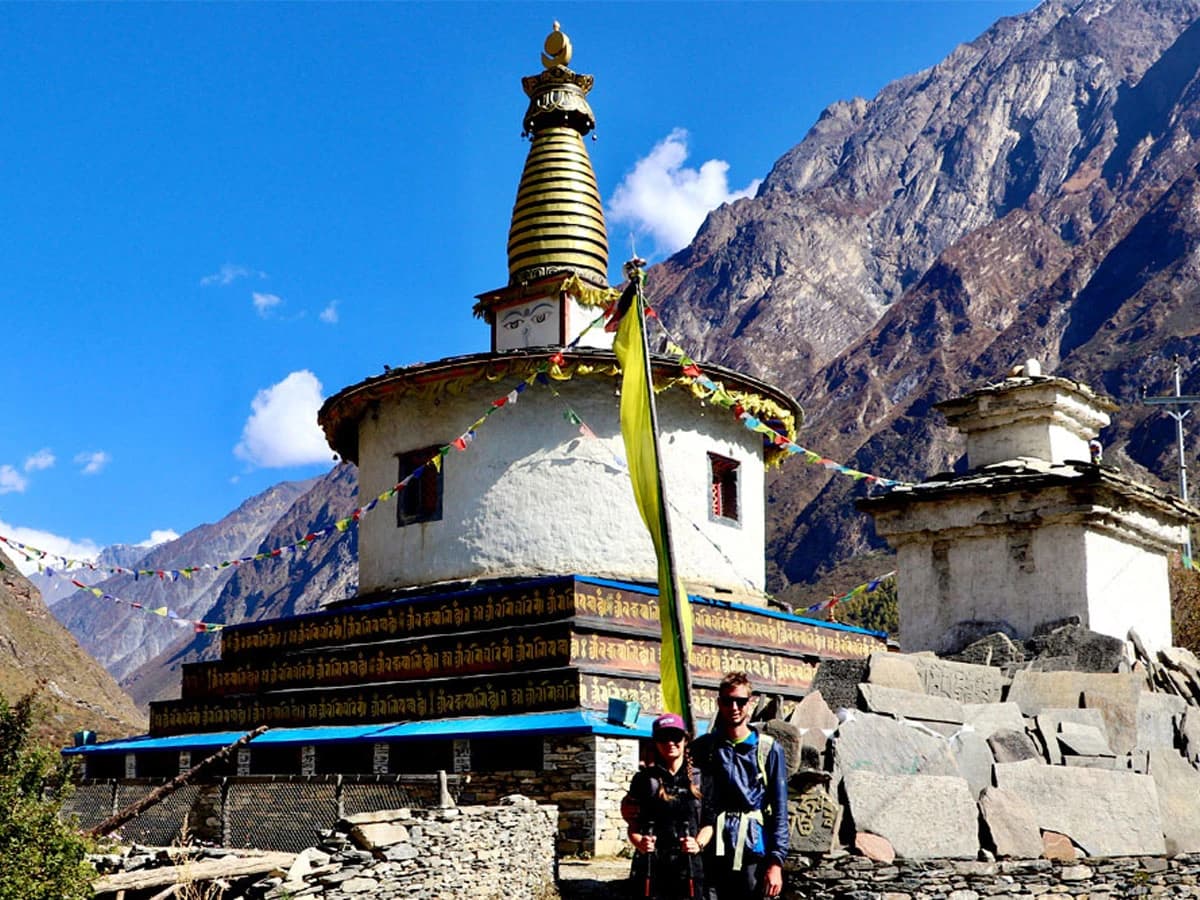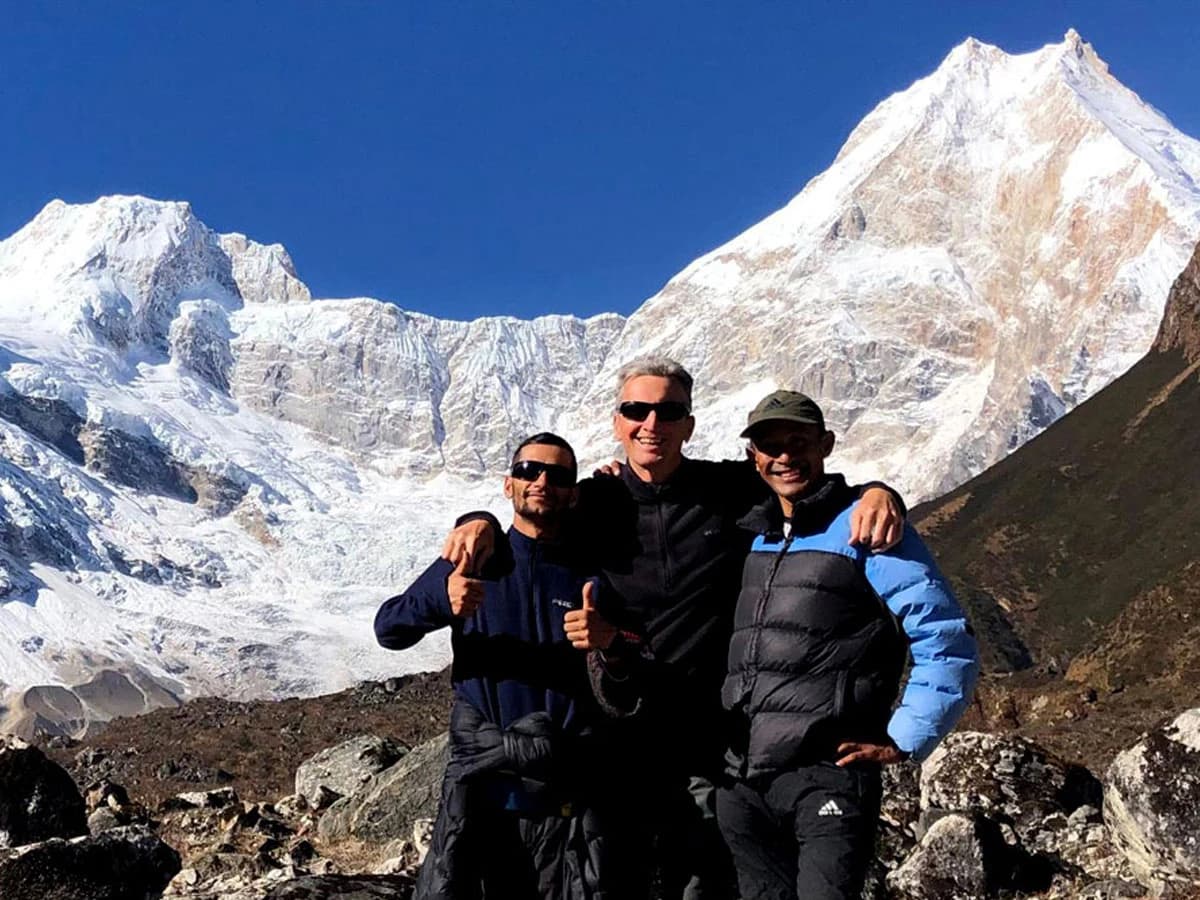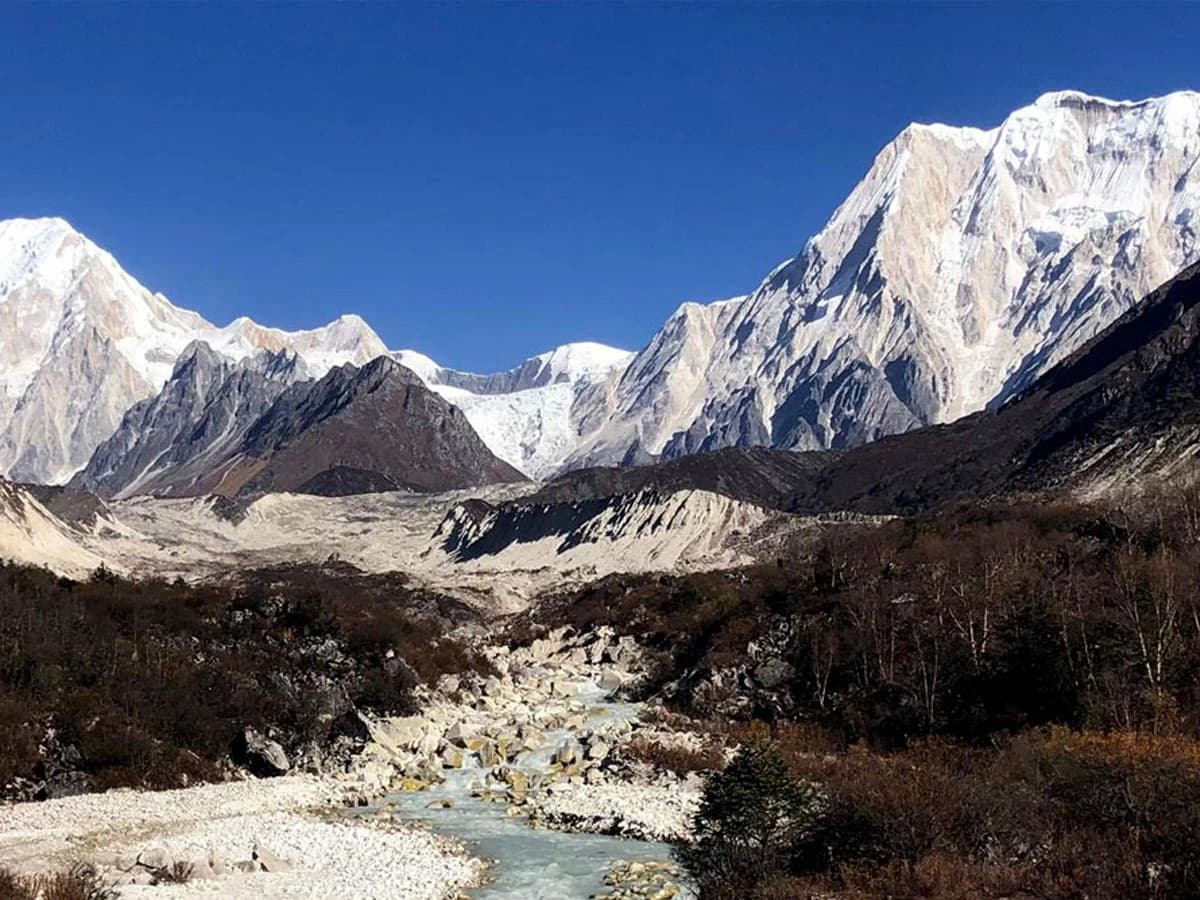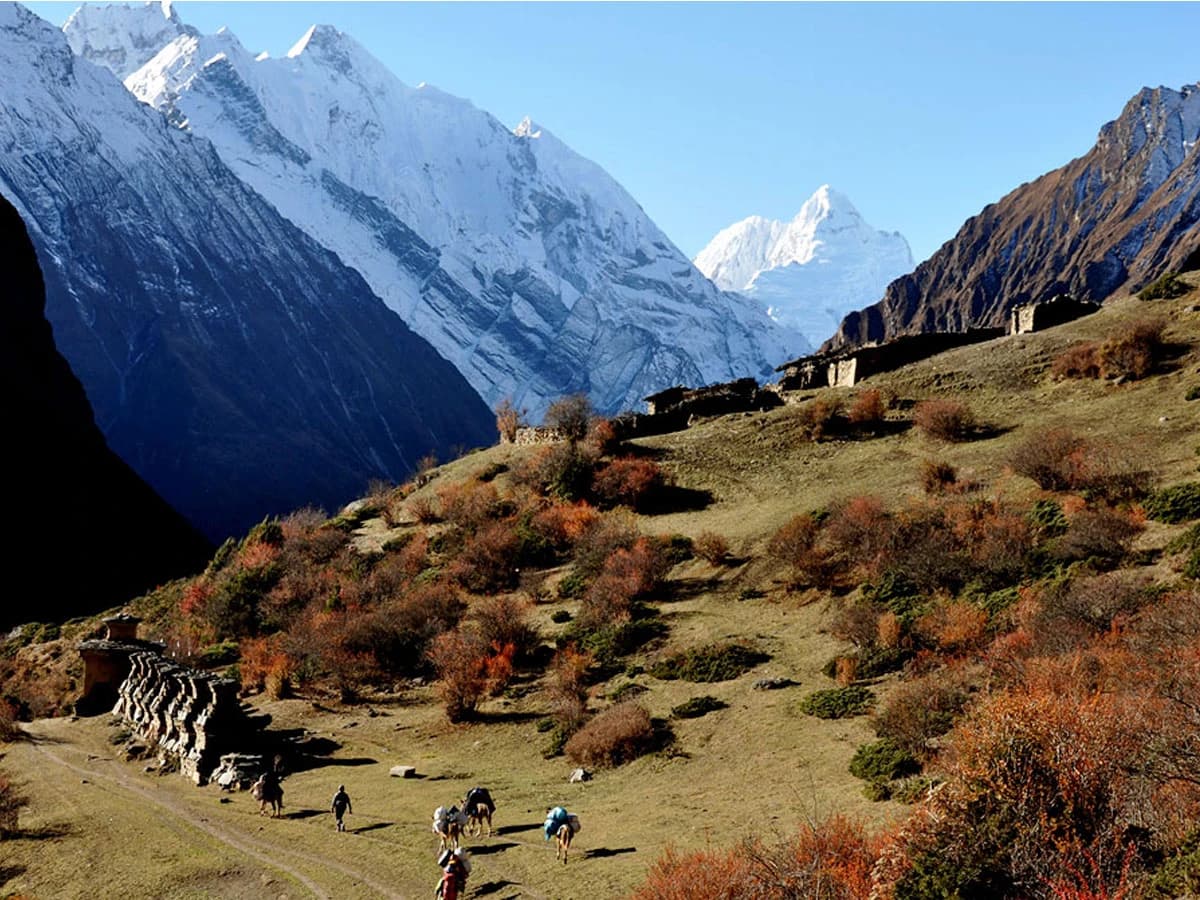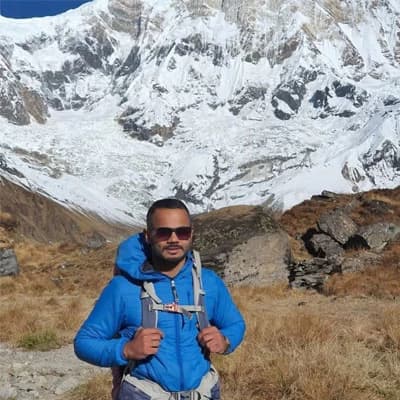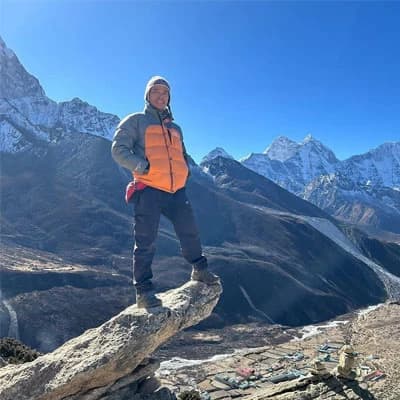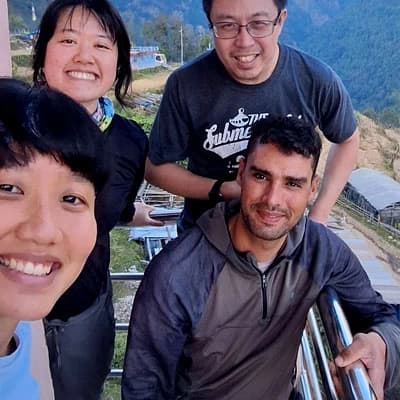The Manaslu Tsum Valley Trek is a unique 20-day adventure that takes you into one of Nepal’s most secluded and culturally rich regions combined with the scenic beauty of the Manaslu Circuit. This trek is perfect for adventurers seeking an off-the-beaten-path experience, blending stunning Himalayan landscapes with ancient Buddhist traditions. You will trek through charming villages, cross high mountain passes, and explore monasteries, all while enjoying breathtaking views of Mt. Manaslu. This adventure offers unparalleled natural beauty, cultural immersion, and a rewarding trekking challenge.
Manaslu Tsum Valley Trek
Highlights
- Scenic drive from Kathmandu to Soti Khola.
- Trek into the remote Tsum Valley, a hidden gem of the Manaslu region.
- Visit Mu Gompa and Lungdang Gompa, renowned monasteries in the Tsum Valley.
- Explore the sacred Milarepa Piren Phu Cave (Pigeon Cave).
- Discover Dephyudonma and Rachen Monasteries, the oldest spiritual sites in the Tsum Valley.
- Spectacular trek around Mt. Manaslu (8,163 m), the world’s eighth-highest peak.
- Enjoy a side trip to Birendra Lake, Punhyen Glacier, or Manaslu Base Camp during a rest day in Samagaun.
- Breathtaking views of Manaslu, Himalchuli, Ganesh Himal, and other peaks along the Nepal-Tibet border.
- Cross the challenging Larkya La Pass (5,106 m), one of the longest and most scenic passes in the Himalayas.
- Experience the rich cultural blend of Tibetan-influenced Nupri people and Gurung communities.
- Witness ancient Buddhist stupas, chortens, and mani walls along the trail.
- Journey through a less-traveled and serene trekking route.
- Walk along historic trade paths that once connected Nepal and Tibet.
The Manaslu and Tsum Valley Trek takes you deep into the secluded Tsum Valley, renowned for its rich Tibetan heritage, ancient monasteries, and unspoiled landscapes. Then, you will circle the majestic Mount Manaslu, the world’s eighth-highest peak.
Starting with a scenic drive from Kathmandu to Soti Khola, the trek leads you through lush forests, terraced fields, and traditional Gurung villages. As you enter the secluded Tsum Valley, the serene surroundings reveal ancient Buddhist stupas, chortens, and monasteries like Mu Gompa and Rachen Gompa, each offering a glimpse into the region’s spiritual traditions.
As you journey through picturesque villages like Chumling and Chekampar (Chhokangparo), you will be immersed in the vibrant cultural tapestry of the Tsumba people, whose unique Tibetan customs and traditions have been preserved for centuries.
A highlight of the Tsum Valley is the sacred Milarepa Piren Phu Cave, a revered site steeped in ancient legends and spiritual significance. Visiting this cave on Day 8 offers a profound connection to the region's rich heritage, with serene mountain vistas adding to its tranquil atmosphere.
After reaching the Manaslu Circuit Tsum Valley Trek’s midpoint at Samagaun on day 13, the mountain view fades away and is replaced by soothing views of yak pastures and village settlements. Here, you will explore Birendra Lake, Punhyen Glacier, or Manaslu Base Camp, which offers stunning views of glaciers and towering peaks on acclimatization day.
The ultimate challenge and thrill come on Day 18 when you cross the dramatic Larkya La Pass (5,106 m). The breathtaking panorama of Manaslu, Himalchuli, and other peaks makes this one of the most memorable days of the trek.
From the serene monasteries and Tibetan-inspired villages of the Tsum Valley to the glacial landscapes and soaring mountains of the Manaslu Circuit, this trek offers an unparalleled experience. Its peaceful and less-crowded path, rich cultural tapestry, and epic mountain scenery make the trek to Manaslu and Tsum Valley a once-in-a-lifetime adventure.
Manaslu Tsum Valley Trek Itinerary
You'll embark on a drive from Kathmandu to Machha Khola. If you choose to travel by local bus, you’ll first take a bus to Dhading or Malekhu along the Kathmandu-Pokhara highway. You’ll then take another bus or jeep to reach Machha Khola. You can also choose to go by private vehicle, in which case the ride becomes a lot more convenient.
We’ll pass through rural villages and green hillsides as the road mutates into a bumpy dirt path. You’ll get views of the southern dial of Mt. Annapurna, Manaslu, Ganesh Himal, and Langtang Himal. After a 7-hour drive, you’ll reach Soti Khola just in time for a much-needed break from traveling and dinner.
Gateway to the Manaslu region, Machha Khola is a village settlement with semi-urban housing. The settlement is encapsulated by green hills and Machha Khola (river).
At daybreak, you’re already set to start your trek along the banks of the Budhi Gandaki River. You might occasionally share the stone steps with mules. The natural hot spring at Tatopani is a good place to take a break.
After a relaxing dip in the hot spring, you’ll cross a suspension bridge over the Budhi Gandaki River and follow the trail that leads to Dobhan. The trail throughout the day is fairly undulating, however, the final part is a steep three-hour climb. Before finally resting at Jagat, a quick visit to a check post will ensure you have the right paperwork. From this day onward, we’ll be trekking into the restricted region.
Today, we continue along the classic Manaslu Circuit trail until we diverge towards the Tsum Valley after lunch.
We begin by ascending to the village of Salleri and then descend to Siribass. The valley opens up as we approach Philm village. From there, we trek to the small settlement of Ekle Bhatti, passing through a gorge, crossing the Budhi Gandaki River, and entering a bamboo forest within the valley.
After lunch, we leave the main trail and head towards the secluded Tsum Valley, continuing our journey until we arrive at Lokpa village.
Today's trek involves some challenging climbs but rewards us with stunning sights, including a deep gorge, the Lungwa River valley, and the familiar rhododendron, pine, and juniper forests. Ganesh Himal stands out as the most prominent mountain in view today.
Upon reaching Chumling village, you have the opportunity to visit the nearby Panago Gompa and Gurwa Gompa, both Buddhist monasteries. These are just two of the many monasteries you will encounter on this trek.
Chumling consists of only a few simple houses, and since we arrive around lunchtime, it’s an excellent chance to explore these gompas before settling in for the evening.
You will start your trek heading towards Gho and Rainjam. As you continue ascending, you will traverse lush rhododendrons and pine forests on your way to Chekampar.
This route offers stunning, up-close views of Ganesh Himal and Himalchuli. After approximately 3-4 hours of trekking through scenic forests and traditional settlements, you will arrive at Chhekampar, a charming high-altitude village in the heart of the Tsum Valley.
You will leave Chekampar behind and trek past barley and potato fields as you head towards Lama Gaun. Along the way, you will observe the lifestyle of the Tsum Valley natives, who primarily engage in farming and yak breeding. The trail is adorned with chortens and mani walls covered in prayer flags.
As you proceed, you will pass the Milarepa Cave and Mu Gompa. In the final section of today's trek, you will cross a suspension bridge over the Siyar Khola, eventually reaching Nile Village.
You will take a rest day to acclimatize to the higher altitude. To aid in the acclimatization process, you will engage in physical activity by hiking to Mu Gumba in the morning. This is the largest monastery in the Tsum Valley, near the Tibetan border, founded by the Bhutanese Buddhist monk Drukpa Rinpoche in 1895. Mu Gumba holds great religious significance, housing precious Buddhist manuscripts, murals, and thangkas. It also features a life-sized statue of Avalokiteshwara, along with statues of Goddess Tara and Guru Rinpoche.
After exploring the monastery, you will descend through the scenic Himalayan landscapes and yak pastures back to Nile Village. For the rest of the day, you can explore this charming high-altitude settlement, soaking in its spiritual ambiance and observing the daily lifestyle of the locals.
You will retrace your steps back to Chhekampar. You will start the day by crossing the suspension bridge over the Siyar Khola. Then, moving past the Milarepa Cave (Piren Phu: Pigeon Cave), you will head toward the Lama Gaun.
From here, you will retrace your steps across the barely and potato fields, chortens, and praying flags to Chekampar.
We will pass through forests, villages, and rivers en route to Chumling. As we descend in altitude, it feels a bit easier to walk as the air is less thin.
Despite being at a low altitude, the trail has its usual ups and downs. The views of Sringi Himal intrigue you, as do the areas of cultivated land. We meet the Budhi Gandaki River again, with another suspension bridge to cross before we reach Deng.
You will first cross a suspension bridge to Bihi Phedi. If you’re fateful, you will also get glimpses of the langur monkeys that roam the area. The trekking trail is embellished with lush green forests and alpine vegetation with mountain views visible in the backdrop. Specifically, the Prok Village serves as a viewpoint for the (Mt.) Siringi Himal.
You’ll follow a zigzag trail and one last steep trek to reach Namrung village where we’ll stay the night.
You’ll trek along the stone mani walls after breakfast to the beautiful Lihi village. This day will showcase a different personality of the Manaslu area, with locals dressing in Tibetan clothes called chubas.
You’ll cross a stream that originates from the Lindanda glacier and reach Sho, a settlement that features elaborate views of the (Mt.) Simnang Himal.
Lho is a distinct settlement with prayer flags, Tibetan-style painted gate arches, mani walls, chortens, and stupas. There’s a large Gompa where children get primary education and are taught under Buddhist philosophies.
You’ll get a more accessible and picturesque view of Mt. Manaslu today, along with views of (Mt.) Himal Chuli. The first part of the trek comprises an easy hike through pine and rhododendron vegetation to Shyla.
We’ll then cross the Numla Khola (river) over a suspension bridge. This is followed by a 1-hour trek to Sama Gaun with delightful mountain views on the trail. As you reach the valley, the mountain view fades away and is replaced by soothing views of yak pastures and village settlements.
Sama Gaun is inhabited by the Nubri people, descendants of Tibetan migrants who arrived here almost 500 years ago. It is also the closest village to Manaslu Base Camp. The village has a large Gompa, numerous small shops, a health post, and a helipad. You will also get access to electricity and wifi, which is always good.
We’ll stay overnight at a teahouse in Sama Gaun.
You can sleep in and relax throughout the day, enjoying the flavorful breakfast, lunch, and dinner of your lodge.
If you still have the energy for more adventure, you can either take a detour to the Pungyen Gompa or hike to Manaslu Base Camp - it’s not like you must sit idle on acclimatization days. However, note that either of these destinations takes almost a day to reach and return, so you’ll have to choose between the two.
Located at a 2.5-hour hike to the south of Sama Gaun, Pungyen Gompa offers splendid views of the glacier and Mt. Manaslu. You may also see Himalayan Tahrs and Yaks grazing in the pasturelands.
Meanwhile, the Manaslu Base Camp is to the north of Sama Gaun, past Birendra Tal. You’ll slowly proceed to the north of Manaslu Glacier to reach base camp. If you’re too exhausted on the trail, you can return from Birendra Tal.
Samdo is a short hike away from Sama Gaun. Arriving in Samdo on time for lunch, exploring Samdo Peak in the afternoon is possible. Samdo is a small village with Tibetan influence, as the inhabitants are believed to be descendants of Tibetan immigrants.
Samdo is the convergence of 3 valleys and is a day’s walk from Tibet. You might see traders with Chinese and Tibetan goods on the trail.
As part of your acclimatization before tomorrow’s climb over the Larkya Pass, you will explore the Tibetan border area. From this vantage point, you can see the Samdo Glacier and the impressive serac at its summit, along with numerous peaks such as Manaslu, Kang Guru, Larkya Peak, and Hiunchuli. This exploration not only aids in acclimatization but also offers breathtaking views of the surrounding Himalayan landscape, setting the stage for the challenging trek ahead.
The trekking trail first passes through icy streams and then to drier barren lands. You’ll get to visit Larke Bazaar, a seasonal Tibetan market set up by local traders. You’ll be crossing two streams as you lay eyes on the Larkya Glacier.
Expect to pass through monasteries and mani walls on the journey. We’ll trek to Salka Khola and ascend towards Dharmasala.
The trek today is on challenging terrain, requiring us to make an early headstart. You’ll trek through valleys and villages along trails marked by prayer flags and carefully descend to the four frozen lakes.
You’ll reach the north side of the Larkya Glacier which also features stunning views of Cho Danda (hill) and Larkya Peak. The terrain is progressively steep en route to Larkya La Pass as you make your way across glacial moraines.
Coming down the other side of the pass there are views of icefalls and mountains as well as Pongkar Tal (lake). A great glacial cirque is also seen from here. We’ll cross the moraines and descend to gentler meadows via a steep gully. The widening valley, mani walls, and sight of human settlements signal the arrival of Bimthang.
This is the final day of the Manaslu and Tsum Valley Trek. It starts with a downhill hike through lush green forests till we cross the Dudh Khola (river). We’ll have lunch in Karche village. You’ll start to see signs of agriculture and tilled fields as Karche is a cultivated area at the top of the Budhi Gandaki valley.
We’ll press forward through more mani walls to Thonje village and then to Dharapani. Our final night on the trek is spent in Dharapani.
Today, we’ll take a 3-hour jeep drive from Dharapani to Besi Sahar. It then takes around 8 hours to drive from Beshi Sahar to Kathmandu. It’s finally time to celebrate after having completed this exhilarating trek.
Manaslu Tsum Valley Trek Route Map
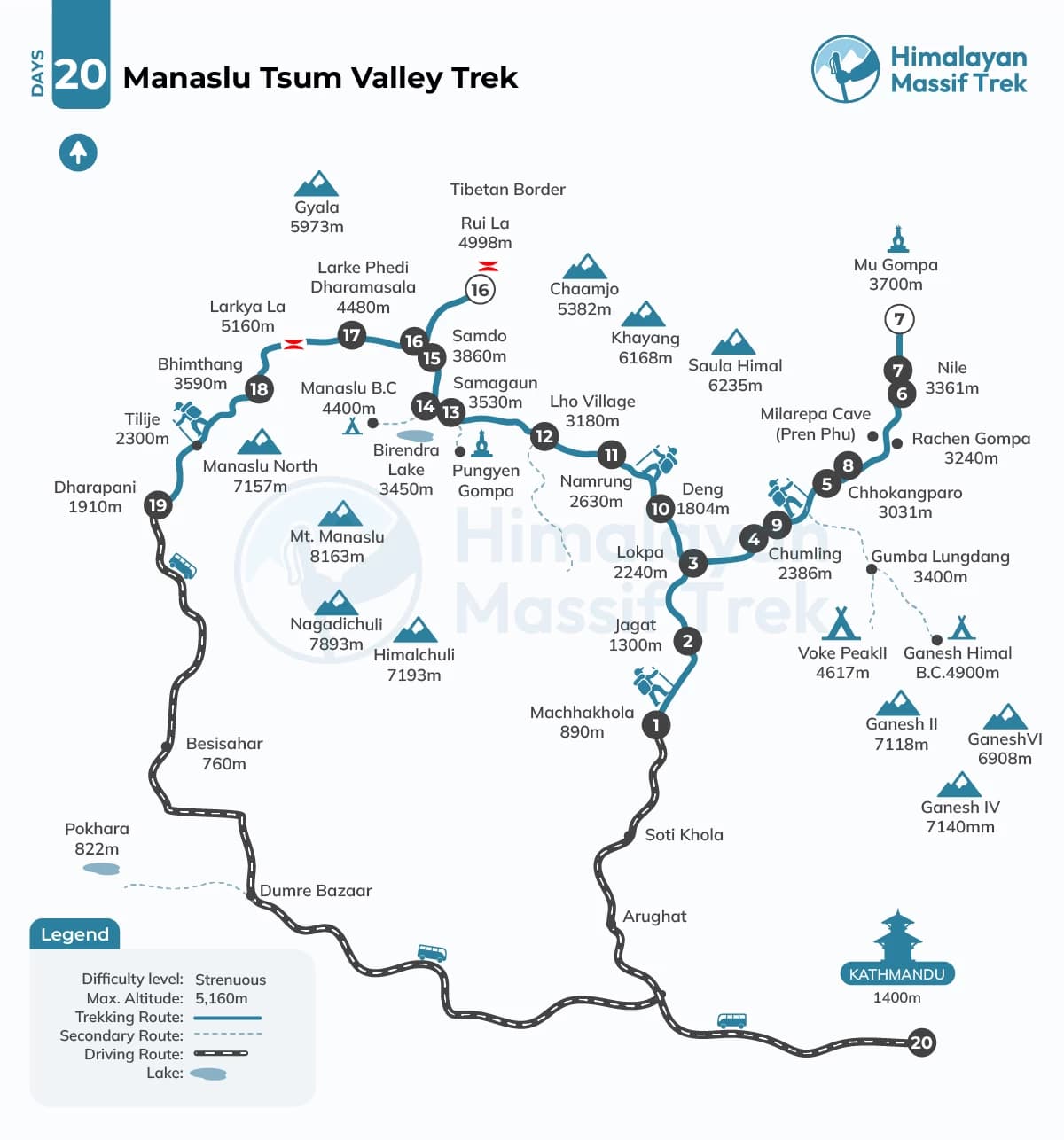

Cost Details
Meals:
- 3 standard meals a day during the trek
- Set of breakfast, Lunch and Dinner
Accommodation:
- 19 nights Lodge accommodation (Private room with common bathroom)
Transportation:
- Shared Transport from Kathmandu to Machhakhola
- Shared transport from Dharapani to Kathmandu
- Note: Private transport is available upon request, please check our addon option for the cost and availability
Permit:
- All the necessary permits for this trek
Guide and porters:
- An experienced English-speaking guide
- Strong porters sharing between two members
Trekking Gears:
- Sleeping bag and down jacket to use for the trek
- First aid medical kit
Miscellaneous:
- Salary, food and accommodation for guide and porters
- Government taxes and liabilities
- Hot and cold beverage
- Phone calls, internet, hot shower and laundry bills
- Travel insurance and Nepal entry visa fees
- Accommodation and meals in Kathmandu
- Tip for a guide, and the porters
To confirm your payment, a deposit payment is required, which is 30% of the total booking price. This deposit helps us secure permits, logistics, and other necessary arrangements for your trek.
We understand that plans can change, and we strive to be as flexible as possible. However, to cover operational costs, a cancellation fee applies. This is a percentage of your total booking price and is deducted from the deposit payment.
Cancellation Fees
Cancel 30% days before departure: 5% of the trip cost
Cancel between 10 to 30 days before departure: 10% of the trip cost
Cancel within 10 days of departure: 20% of the trip cost
If you need to cancel, please notify us as early as possible to reduce charges.
Rescheduling
Unexpected circumstances can disrupt travel plans, even if you still want to do the trip. To support our clients, we have generously waived all rescheduling fees. You can postpone and reschedule your trip at no additional cost, as long as the new departure date falls within one year of your original booking.
Upgrades
If you wish to upgrade your accommodation, transportation, or any other services not mentioned in the Trip Includes section, please be aware that these upgrades will incur additional costs. We can assist in arranging these options for you based on your preferences and availability.
Dates & Availability
Private TripIf you don't find an appropriate date, you can propose a Preferred Departure Date, and we’ll ensure the trip runs as scheduled just for you.
Trip Gallery
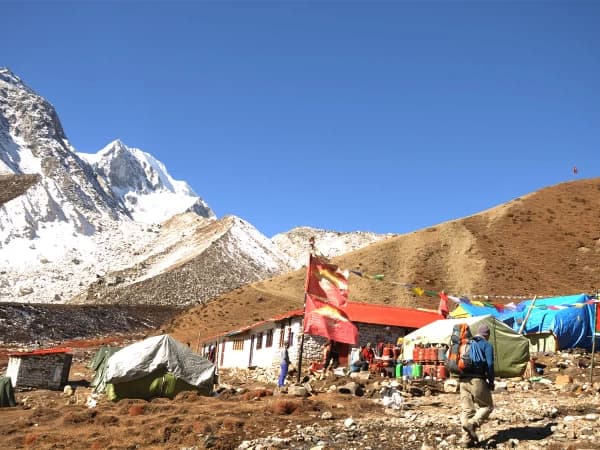
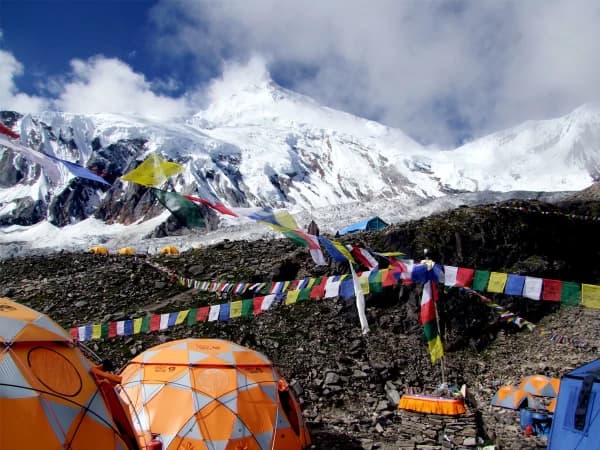

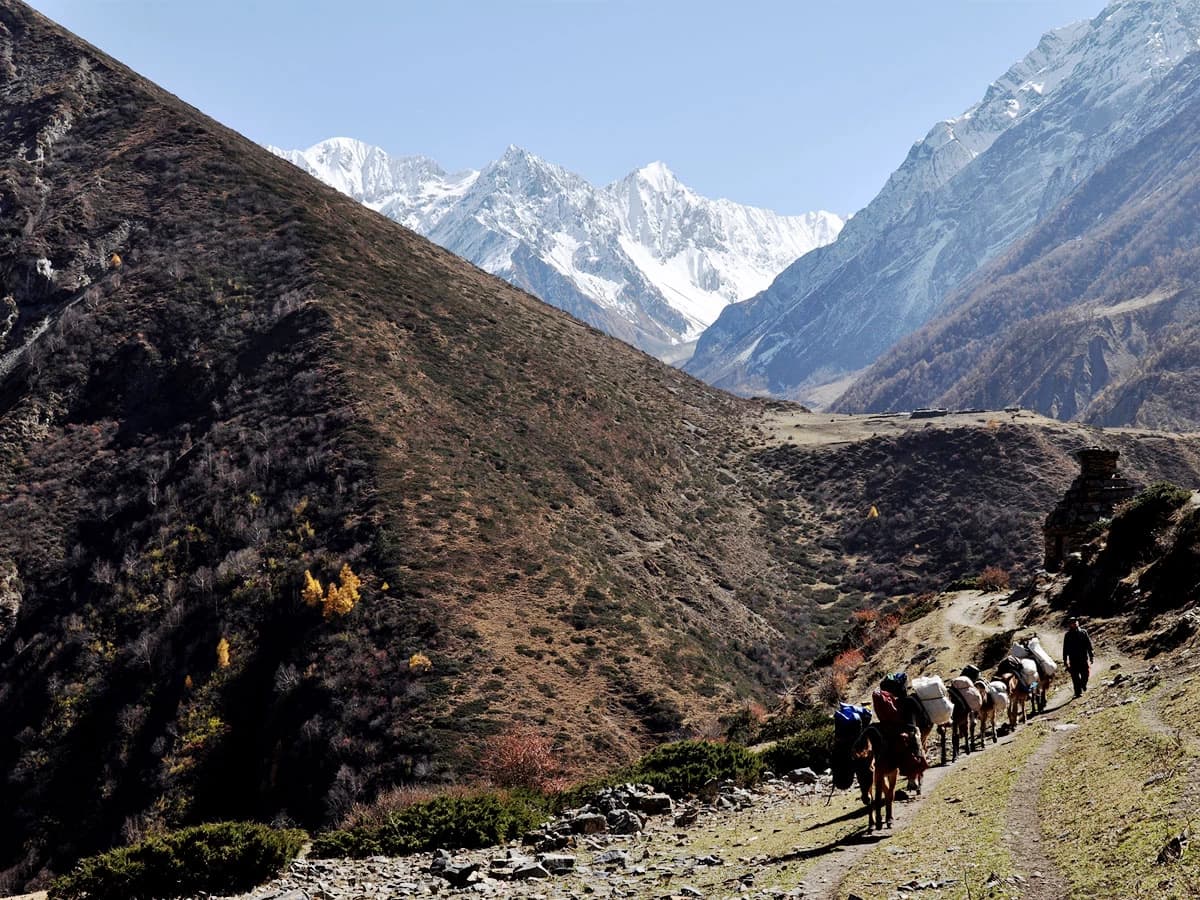
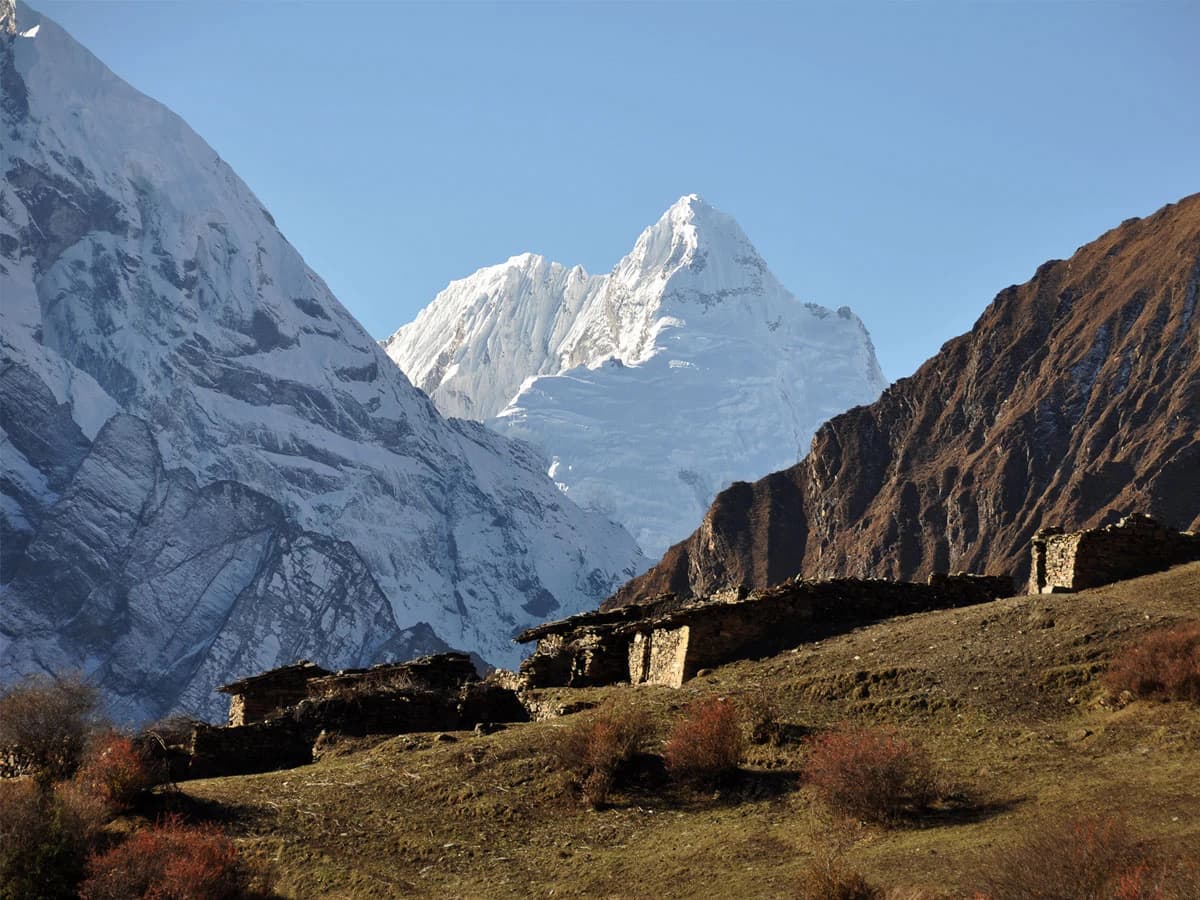
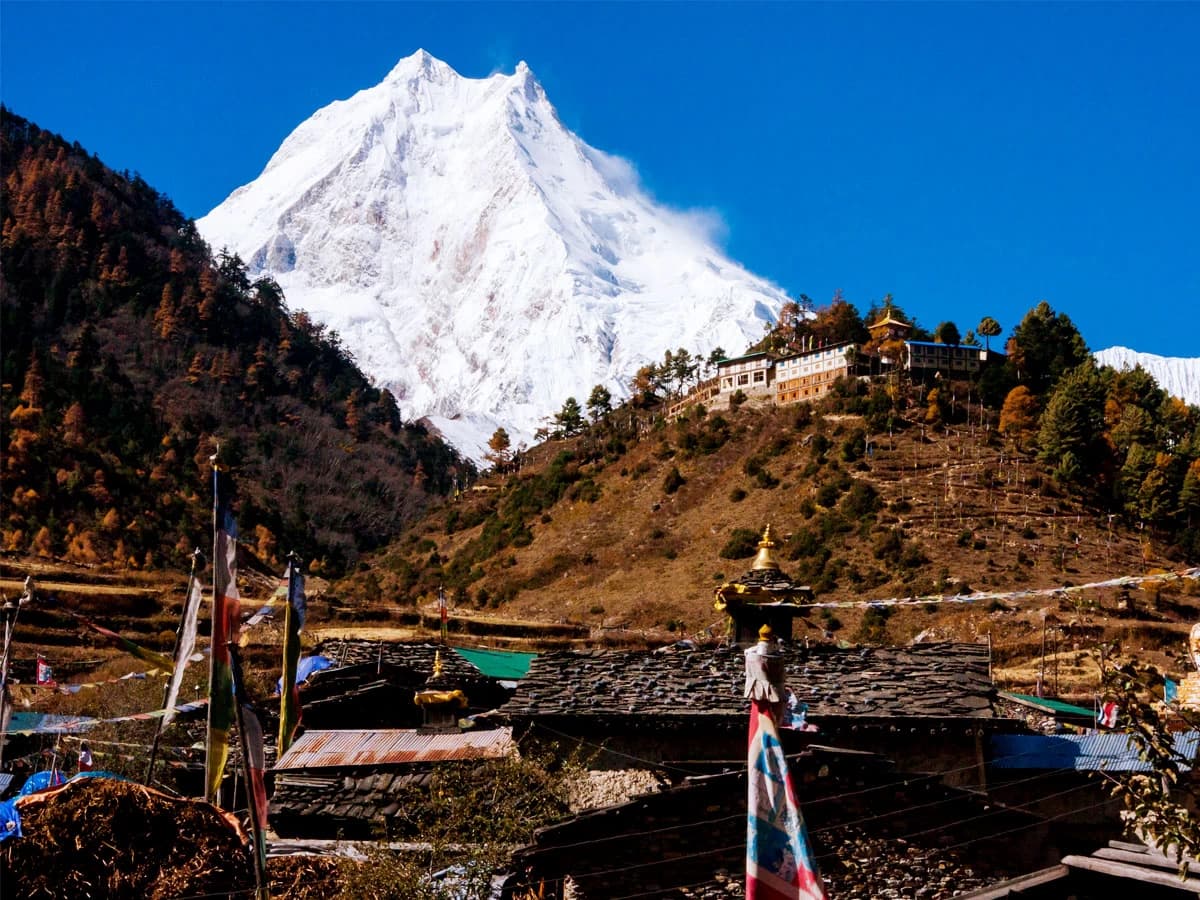
Essential Information
Who Can Trek to Manaslu and Tsum Valley: Eligibility and Permit Requirements
The Tsum Valley Trek is a restricted area, requiring trekkers to obtain special permits. These include the Manaslu Conservation Area Permit (MCAP) and the Tsum Valley Restricted Area Permit, which can only be arranged through a government-approved trekking agency. Independent trekking is not allowed, and the agency handles the permit application process with the Nepal Tourism Board.
Only those who have appropriate trekking experience and physical fitness can take on the Tsum Valley Trek, as the trail is rugged and involves significant elevation gains. The trek also crosses high-altitude passes, such as the Larkya La Pass at 5,106 meters, making it physically demanding. Because of this, trekkers should have prior high-altitude trekking experience or be in good health, with the ability to acclimatize properly.
By traveling with Himalayan Massif Trek, trekkers can enjoy a hassle-free experience - we handle the entire permit process and arrange all necessary permits and documents for a smooth journey.
Best Time to Trek the Manaslu Tsum Valley
The best time to trek the Manaslu Tsum Valley is during the pre-monsoon (spring) and post-monsoon (autumn) seasons. These months offer the most favorable weather conditions, providing trekkers with clear skies, moderate temperatures, and optimal trekking conditions.
The spring season, from late March to early June, brings pleasant temperatures, vibrant rhododendron blooms, and clear views of the Himalayan peaks. The autumn season, from late September to November, offers crisp air, excellent visibility, and a calm atmosphere, making it the most popular time for trekking.
During the monsoon season (June to early September), the trails can be muddy and slippery, with a higher chance of rainfall, which makes it less ideal for trekking.
Similarly, the winter months (December to February) are quite cold, with heavy snow in higher altitudes, particularly around Larkya La Pass, making the trek more challenging.
Best Time to Trek - Season and Temperature Table:
|
Season
|
Months
|
Average Temperature (Low - High)
|
Weather Conditions
|
|
Spring
|
Late March to June
|
5°C - 15°C (Low) /
15°C - 25°C (High)
|
Clear skies, moderate temperatures, blooming rhododendrons
|
|
Autumn
|
Late September to November
|
-5°C - 10°C (Low) /
10°C - 20°C (High)
|
Crisp air, clear views, calm trekking conditions
|
|
Monsoon
|
June to September
|
15°C - 25°C (Low) /
20°C - 30°C (High)
|
Rainy, wet trails, slippery paths, and foggy views
|
|
Winter
|
December to February
|
-10°C - 5°C (Low) /
0°C - 10°C (High)
|
Cold, snowy conditions at higher altitudes, challenging conditions
|
Trekking Difficulty and Fitness Requirements
The trek to Manaslu and Tsum Valley is challenging and requires good physical condition. It involves long days of walking, steep ascents, and high-altitude conditions, particularly when crossing sections like the Larkya La Pass.
The trek itself is considered moderately difficult, but the combination of high-altitude trekking and rugged terrain can be physically demanding. With the highest point at Larkya La Pass (5,106 meters), trekkers may experience fatigue, breathlessness, and other altitude-related symptoms. The trail involves steep ascents and rocky sections that require both physical strength and mental toughness.
To prepare for the Manaslu Circuit Tsum Valley Trek, trekkers should focus on improving their cardiovascular endurance, leg strength, and stamina, as well as ensuring they are ready for high-altitude trekking.
Suggested Pre-Trek Exercises
Cardiovascular Training:
Hiking with a Backpack: Hiking with a weighted backpack on varied terrain simulates the trek's conditions and helps build endurance.
Running or Jogging: A few days a week, aim for 30-45 minutes of running or jogging, focusing on improving stamina.
Cycling or Swimming: Both activities are excellent for building aerobic fitness and endurance.
Leg Strength:
Stair Climbing: Building strength in your legs is essential for the uphill and downhill sections of the trek.
Squats and Lunges: These exercises will strengthen your quads, hamstrings, and glutes to help you handle steep sections.
Step-ups: Using a bench or step, this exercise mimics the upward movement needed for trekking.
Altitude Preparation (Lung Exercises):
Breath Control Exercises: Deep breathing techniques help improve lung capacity and oxygen utilization at high altitudes. Practice breathing in for 4 seconds, holding for 4 seconds, and exhaling for 4 seconds.
Interval Training: To simulate low-oxygen conditions, try interval training, where you push your heart rate up quickly and then recover, similar to the exertion you may experience in high-altitude environments.
By focusing on these areas in the 2-3 months leading up to the trek, trekkers can increase their physical readiness and ensure a smoother, more enjoyable experience on the Manaslu Tsum Valley Trek.
Accommodation Options on the Manaslu and Tsum Valley Trek
During the Manaslu Tsum Valley Trek, trekkers will primarily stay in teahouses or local guesthouses along the route, providing a comfortable and authentic experience of Nepali hospitality.
As the trek takes you through remote regions, the accommodations may be less modern than in more popular trekking routes, but they still offer a warm and welcoming atmosphere. The rooms typically consist of simple wooden beds with a communal dining area where trekkers can savor meals such as dal bhat (lentils and rice), noodles, momo (dumplings), thukpa (noodle soup), sel roti (a traditional rice donut), including yak cheese, butter, and milk, which are often incorporated into the meals.
In higher-altitude areas, rooms may be small and more basic, but the beautiful landscapes and serene surroundings make up for it. However, trekkers must keep one thing in mind, during peak trekking seasons, which typically occur from March to May and September to November, the teahouses can become quite busy. It is advisable to book accommodation in advance, especially for larger groups or if you are trekking during the busiest months.
In less busy seasons, such as winter or the monsoon months, it may be easier to find available teahouses without booking in advance. However, the weather conditions can be challenging during these times, and the number of trekkers may be significantly lower.
Regardless of the season, it's always a good idea to carry a sleeping bag, especially for higher-altitude treks where the temperature can drop significantly during the night.
Health and Safety Tips
Health and safety are crucial on the Manaslu Tsum Valley Trek, especially as trekkers ascend to high altitudes. The risk of altitude sickness is significant, and it's important to be aware of its symptoms, such as dizziness, nausea, headache, and difficulty sleeping.
To prevent altitude sickness, trekkers should ascend gradually, allowing their bodies to acclimatize. Rest days are essential for this process, particularly before reaching higher altitudes like Larkya La Pass. Staying well-hydrated, eating nutrient-rich meals, and avoiding alcohol and smoking are key to coping with altitude.
In case of altitude sickness, trekkers should descend to a lower elevation immediately and seek medical help if necessary. It's also advisable to consult a doctor before the trek, especially for those with pre-existing health conditions. Doctors may recommend taking Diamox (Acetazolamide) to help prevent altitude sickness.
Manaslu Tsum Valley Trek Equipment List
FAQs
Key highlights include crossing Larkya La Pass, visiting historic monasteries like Mu Gompa and Rachen Gompa, experiencing Tibetan culture, and enjoying views of peaks like Manaslu and Himalchuli.
The trek involves significant elevation gain, reaching up to 5,106 meters (16,752 feet) at Larkya La Pass.
Yes, hunting is banned in the Manaslu region as it is part of a conservation area dedicated to protecting wildlife and biodiversity.
The Manaslu trek is more challenging in terms of altitude and terrain but is generally considered less difficult than the Everest Base Camp trek due to shorter daily distances.
No, supplemental oxygen is not typically required for the Manaslu Tsum Valley Trek. The highest point, Larkya La Pass (5,106 meters), is within the range where most trekkers can acclimatize without the need for supplemental oxygen. However, it's important to be prepared for the altitude by allowing proper acclimatization, staying hydrated, and monitoring for any symptoms of altitude sickness.
Larkya La Pass is challenging due to the altitude, rocky terrain, and the potential for snow, but it is safe to cross with proper preparation and guidance. It is the most demanding part of the trek.
Accommodation during the trek is typically in tea houses or basic lodges with simple amenities, offering a warm, rustic experience.
Mobile signal and internet are available in certain villages, especially closer to the starting and ending points of the trek, but are limited in the more remote sections.
The best festive times to visit the Manaslu Tsum Valley are during Tibetan Buddhist festivals, such as Losar (Tibetan New Year) in February or March and Buddha Jayanti in April or May. Apart from these months, the usual travel seasons of March and Autumn in Nepal are also ideal to trek the Manaslu and Tsum valley region.
Yes, cultural festivals like Buddha Jayanti and Saka Dawa are celebrated during the Tsum Valley Trek. Buddha Jayanti, commemorating the birth, enlightenment, and death of Lord Buddha, is observed with prayers and ceremonies in monasteries. If you want to experience these festivals firsthand, consider trekking in April or May when they are celebrated.
Yes, you need a special trekking permit for the Manaslu region, as well as a restricted area permit for Tsum Valley. Both should be obtained through an authorized trekking agency. If you book with HMT, we will make all permit arrangements for you.
Yes, crossing Larkya La Pass is a key highlight of the Manaslu Tsum Valley Trek, offering stunning views and a significant challenge.
You can see wildlife such as the Himalayan tahr, snow leopard, blue sheep, and various bird species like Golden Eagle, Eurasian Griffon, Himalayan Griffon, Blood Pheasant, etc., particularly in the Manaslu Conservation Area.
The Manaslu Tsum Valley Trek is relatively remote, offering a more isolated experience compared to popular treks like Annapurna or Everest, with fewer tourists and greater immersion in local culture.
Yes, it is much less crowded, making it ideal for trekkers looking for peace and a more authentic experience.
Expertise and Local Knowledge
At Himalayan Massif Trek, we pride ourselves on our unparalleled expertise and deep connection to the Everest region. Our experienced guides are not only skilled in navigating the rugged trails but also possess an in-depth understanding of the culture, history, and traditions of the Sherpa people.
Our team is composed of local experts who have spent decades exploring the Himalayan belt. Their intimate knowledge of the terrain, weather patterns, and the Manaslu region’s unique ecosystems ensures a safe, smooth, and enriching trekking experience.
Authentic Local Experiences
At Himalayan Massif Trek, we believe in offering an authentic, culturally immersive trekking experience. Throughout your Manaslu Tsum Valley Trek, you will have the opportunity to explore traditional villages, each with its unique charm and character.
These villages provide a glimpse into the everyday life of the locals, with opportunities to interact with locals, visit monasteries, and witness traditional customs.
During the trek, you will be served authentic Nepali meals that highlight the flavors of the region, giving you a true taste of the local cuisine.
Value for Money
At Himalayan Massif Trek, we offer competitive pricing without compromising on quality. Our transparent pricing ensures there are no hidden costs, so you can focus on enjoying your trek without worrying about unexpected expenses.
Our comprehensive packages cover all the essential aspects of your journey, including permits, accommodations, and meals, providing you with a hassle-free experience from start to finish.
We also offer group discounts and special offers for repeat travelers, making it easier and more affordable to explore the Himalayas with us.
Whether you're a first-time trekker or a seasoned adventurer, you will find great value in our well-designed packages that give you everything you need for a memorable and smooth trekking experience.
Environmental Responsibility
Our company is deeply committed to preserving the natural beauty of the Himalayas and minimizing our environmental impact.
We follow eco-friendly trekking practices to ensure that our activities have minimal effect on the delicate ecosystems of the Manaslu region. From reducing plastic waste to promoting responsible trekking behavior, we work hard to protect the environment for future generations of trekkers.
We also support the local communities by partnering with local suppliers, ensuring that the economic benefits of tourism stay within the region.
Our commitment to preserving the pristine beauty of the Everest region means that every trek with Himalayan Massif Trek not only provides an unforgettable adventure but also supports the long-term conservation of this majestic landscape.
- Expertise in High-Altitude Trekking Adventures
- Over 18 Years of Experience in The Himalayas
- Authorized and Reliable Trekking Partner
- Trusted by Thousands of Adventurers Worldwide

This trek was LONG but rewarding. The Tsum Valley section was peaceful, with prayer flags and ancient monasteries everywhere. The Manaslu section? Straight-up epic. Be...
Tsum Valley felt like stepping back in time—monasteries, ancient caves, and friendly locals who welcomed us with butter tea. The trek to Manaslu was challenging...
